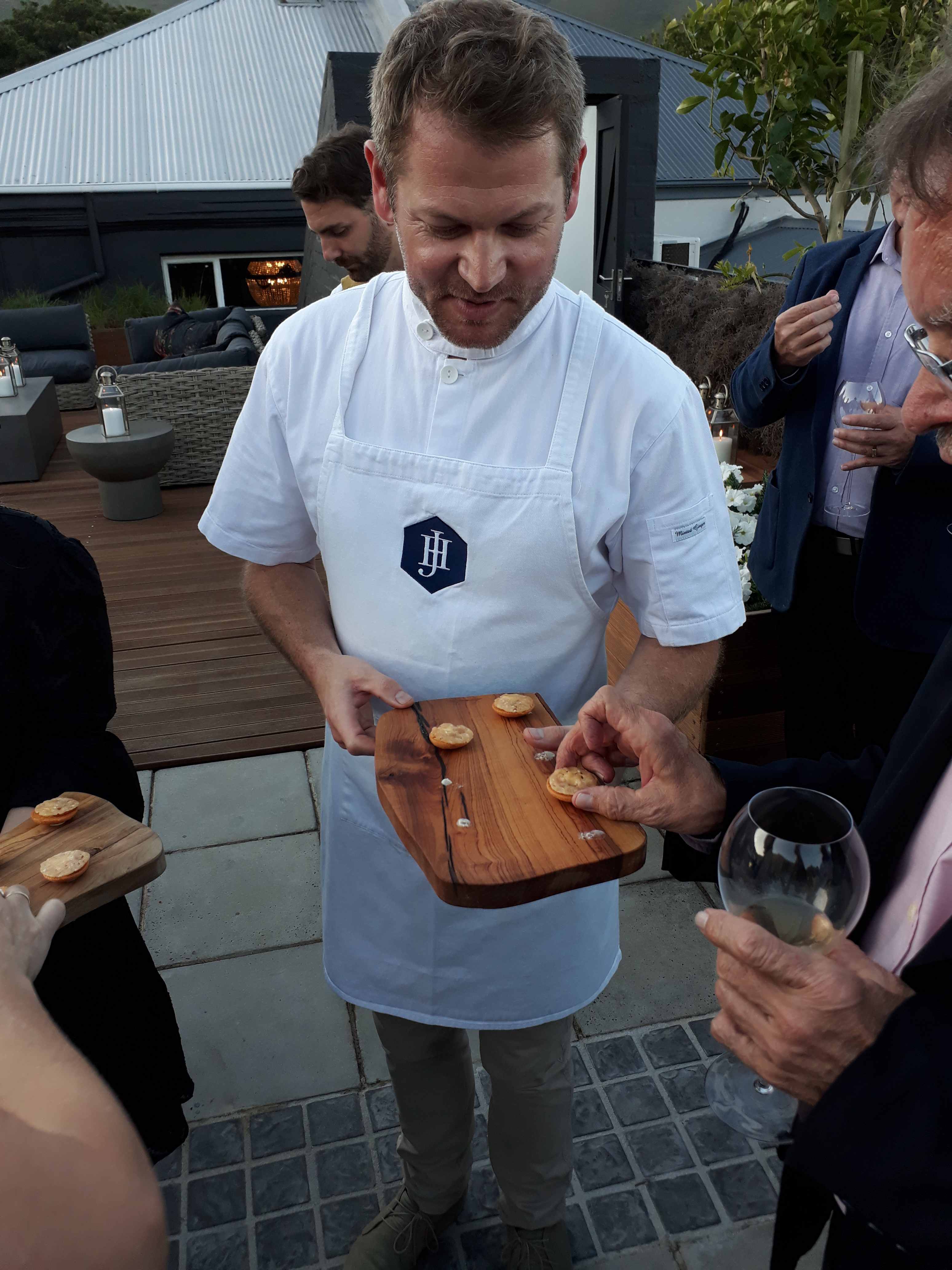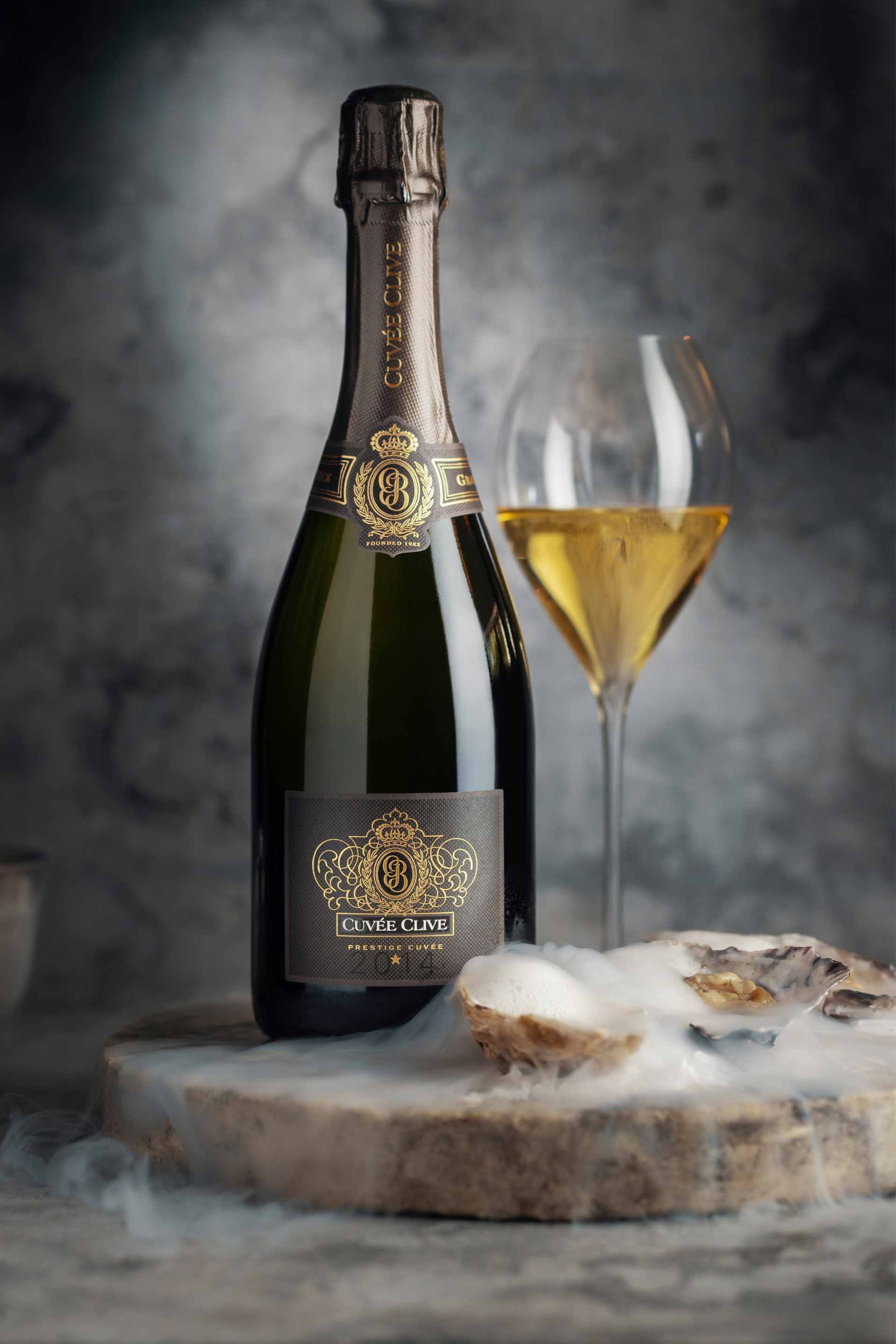Curated Cuvée
“Curated” anything is a trend. Curated content, curated travel, curated experiences... but as with most trendy things which are appropriated by media mavens and influencers, it can become overworked, tired and clichéd. Diminished by its ubiquity.
Curated is defined as being something which is “carefully chosen and thoughtfully organised”.
The problem in our modern, social media driven world is that so much of what claims to be “curated” falls flat on its face because the precious folks doing the “curation” lack the expertise and knowledge to pull it off.
But then there are those moments when it IS pulled off – and an ostensibly simple event is elevated to sublime levels simply by its exquisite elegance and understated refinement. There’s very little that can compete with a Cape Town summer sunset, especially viewed from a rooftop deck with Table Mountain’s looming bulk towering behind. Oh – and a Michelin-starred chef personally circulating platters of delicately crafted canapés like Springbok biltong lamingtons, tiny pigeon and mushroom sosaties skewered on a rosemary sprig and braaibroodjie macarons.

Jan Hendrik van der Westhuizen offering mini braaibroodjie macarons.
That was the case with the launch of the most recent vintage of Graham Beck’s prestige bubbly, the Cuvée Clive 2014 at the Kloof Street premises of Michelin-starred chef Jan Hendrik van der Westhuizen. Used as a test bed for what will be his second restaurant, Klein JAN, at Tswalu private game reserve in the Kalahari near Upington, the menu comprised local – and unusual – ingredients, such as the camel milk used in the first course of apple, spring vegetables, chorizo and white beans and haddock. Or the Franschhoek trout in rooibos broth with celery, cucumber, tomato and fennel and the whole quail stuffed with grains and Upington dried fruits, glazed with Kalahari truffle infused potstill brandy jus.

Graham Beck’s prestige offering, the 2014 vintage of Cuvée Clive.
There have been just four vintages of Cuvée Clive to date, cellar chief Pieter Ferreira said – because it’s Graham Beck’s prestige cuvee, only made when it’s truly exceptional. 2009, 2011, 2012 and 2014 are the vintages deemed worthy. Ferreira might seem like an amiable, jovial fellow but when it comes to bubbles he has a streak of ruthless attention to detail a mile wide! That focus informs all that the Graham Beck team does and is why they took the bold decision some years back to only make bubbly. Ferreira and his team experiment constantly, with fruit from different areas, with oaking, time on lees and dosage.
The 2009 and 2011 vintages sampled at the dinner were both Pinot Noir and Chardonnay blends while the 2012 and 2014 were all Chardonnay. “It wasn’t supposed to be that way,” Ferreira admitted, “but the wines were just so spectacular on their own that we took a decision to leave them that way.”
As the press release states: “70% of the blend originated from one block on the Graham Beck estate in Robertson, planted in 2002 to four different clones of Chardonnay on pure limestone soil while the remaining 30% comes from Darling, lending bright and racy acidity to the blend.”
The wealth of information in that sentence is illustrative: one vineyard – limestone soil – four different Chardonnay clones... Add in the notes on its making: “Primary fermentation and maturation took place in neutral Piece Champenoise barrels for a three month period, after which the two portions were blended and bottled. After 60 months of lees ageing in the bottle, the 2014 Cuvée Clive emerged as a showcase of power and elegance seamlessly flowing together.”
In terms of residual sugar, the 2014 is the driest yet at 3.44g/l contrasted with 4.1 on 2012, 4.9 and 4.8 on the 2011 and 2009 respectively. As with the others, it spent a full five years – 60 months – on lees in the bottle. Already it has notched up critical acclaim with MW Tim Atkin scoring it 96 points and making it his top Methode Cap Classique in his annual Special Report on South Africa.
It all seems so simple and easy when boiled down to those two sentences in the release. But here’s another snippet – about the packaging: “Cuvée Clive has also undergone a sleek new packaging upgrade, with elegant label design tweaks by the Haumann Smal Design Studio. The paper was changed from coated to uncoated to allow for less shine and a more understated and premium look and feel. More foil was introduced to add to this premiumised design and to contribute an element of opulence. The texture on the front and neck labels was adjusted so that they fitted in with the capsule and also added more overall dimension. The vintage is now displayed in a larger, yet more subtle font. The high build is limited and only employed on the Graham Beck logo and Cuvée Clive to enhance these key design elements.”
Subtle tweaks to paper, font, foil ... things the Average Joe won’t even notice or possibly care about. The point being that this is a wine which is not for said Average individual. It’s a luxe product, aimed at the discerning premium end of the market where the ultimate consumer will not only be au fait with Champagne but will compare this South African example to the international standard – and not find it wanting. Just like the chef and his food, all of which was superb. Ostensibly simple, it was obvious that Jan Hendrik is fastidious and exacting in his execution. He appeared unruffled and in control at all times but like a graceful swan, you knew that the proverbial webbed feet were working below the calm surface, providing the perfect propulsion. Just a lift of an eyebrow, a casual glance and Jan conveyed his message to his team.
This event – yet another wine launch – was anything but “yet another”... It was world class, discriminating, ostensibly casual and calm and yet intense and powerful at the same time. Like the wine, perfectly curated in the truest sense of the word.
- Fiona McDonald